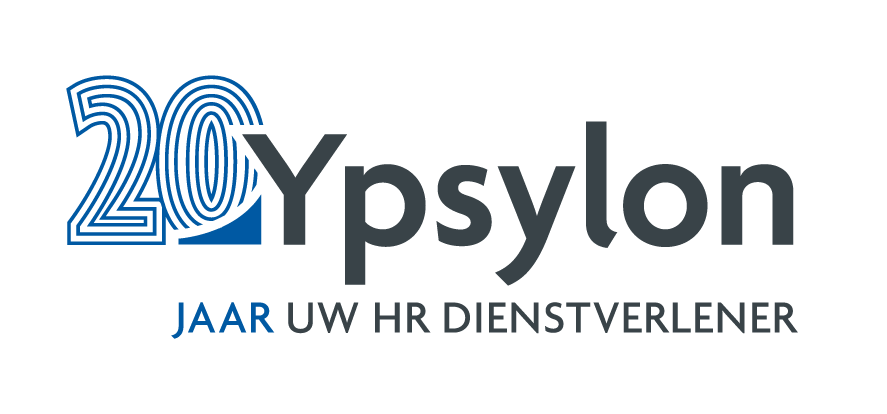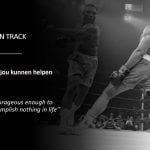We live in a world that is constantly changing and at breakneck speed. All these developments have a major influence on the world in which we operate and on how we must maintain ourselves successfully. J. Bourke lists four megatrends that determine our work environment, our priorities and the new demands on executives:
- New markets are emerging, partly as a result of globalization and emerging economies
- Our customers are becoming more diverse; both from a demographic point of view and from the expectations they impose on suppliers. Customers have higher demands - supported by technological developments and by having multiple options. They expect solutions that are optimally tailored to their wishes
- Increase in innovative ideas - organizations must continue to innovate to stay ahead of the competition - innovation is high on the agenda
- Talent pools are more diverse - demographic data show that, both nationally and internationally, the working population is becoming more diverse in many areas. Think of age, education, migration background, gender, etc.
The four trends mentioned show that we are dealing with an increasing diversity in several areas. Although this may come across as complex and challenging, it offers many opportunities for organizations. Various studies have shown that the inclusivity concept is crucial for organizations in the coming years to be able to continue to innovate, grow and remain competitive.
Responding correctly to the various trends offers organizations great opportunities to gain a competitive advantage. Think of opening up new markets, acquiring new customers, a greater conversion of innovative ideas that are converted into new services or products and bringing in and retaining the best talent. The change capacity of organizations is tested in the way in which they anticipate these trends and pay attention to the organizational culture and vision of leadership. H. Rampersad is talking about building a sustainable circular economy, in which resources are used and not wasted. This requires an inclusive culture in which we make optimal use of each other's talents. Creating sustainable circular innovation requires Diversity, Inclusion and Belonging (involvement). His starting point is that there are still a lot of opportunities for growth and improvement within both organizations and our society, if we really start applying the inclusive philosophy.
The success of divers teams
A lot of research has now been conducted into the added value of diverse teams, from which it can be concluded that diverse teams lead to more innovation and better performance (McKinsey & Company 2018 and Korn Ferry Institute 2018).
- 70% more chance of opening up new markets
- 75% greater chance that innovative ideas will be converted into new products
- 33% more chance of profitability
- 19% more innovative ideas
- 87% better decision making
These are of course nice figures, but diversity alone is not good enough. A major condition is that diversity can only be successful if it is properly managed. It goes without saying that a more homogeneous team is easier to manage than a team with more differences, more points of view and more mutual prejudices. When diversity is not properly managed, it leads to more chaos and lower productivity. This is also a major challenge for many organizations. Remember that organizations spend a lot of effort to bring in more diversity, but are not capable of keeping people in.
The importance for Society
In addition to a substantiated story about the necessity and added value for inclusive leadership to benefit from this as an organization, I do not want to skip the importance for our society. The recently heated discussions on equal treatment, racism and exclusion are an important signal that there is still a strong sense of dissatisfaction on these issues. Although I see the Netherlands as a country of opportunities and certainly compared to many other countries, as a tolerant and civilized country, unfortunately there are still too many incidents that show that there is still enough work to be done. I'm talking about organizations that still exclude people based on their name, or someone who gets threatened and been beaten only because his or her sexual orientation, or a women who gets all kinds of sexist comments on the street or at work. Of course there are many more painful examples that only confirm the need for improvement.
"Unfortunately, there are still too many incidents that show that there is still plenty of work to be done"
Fortunately, initiatives are possible in all sorts of areas to achieve improvement and promote equal opportunities. Although I am not in favor of target quotas, I do realize how important it is that there are role models that every Dutch person can identify with in our public and governmental institutions. Everyone needs role models to realize that there are no limits to achieving what you want to achieve. In certain sectors, such as media and politics, it is important that this recognizability is there, and it is best to steer towards this in this phase of the diversity debate. Ultimately, what matters is that the systems and processes used within institutes and organizations and the existing culture are freed from unnecessary prejudices that remove equal opportunities.
What can organizations do?
If organizations want to apply the inclusive philosophy, they should look at the organizational culture, the systems and processes and the people. Although our attention often and quickly turns to the human side, we must realize that prejudices are quickly creeping into our culture, systems and processes. Once this is systematically embedded, it will not change quickly through training or a one-time intervention. It is essential to check whether culture, systems and processes are in line with the intended goal of becoming a more inclusive organization. Following a mandatory training in relation to Diversity & Inclusion is therefore not going to "make a difference" if the intended change is not supported at the top.
The Inclusive Leader
Within many organizations there is a great need for a correct vision of leadership in order to achieve a diverse and inclusive organization. The current generation of experienced managers have largely always managed homogeneous teams (if possible at all). It is about teams, in which mutual prejudices play a less role. In addition, times have changed and younger generations in particular seem to be much more decisive for the desired culture in which they want to work - a culture in which individuality comes first! This seems to me to be the condition that a good manager must meet - offering space for everyone's individuality, so that talents can develop and there is a real connection. This leads to more involvement, greater motivation and more innovation, which in turn leads to better work performance.
J. Bourke has done extensive research on the characteristics of the Inclusive leader. Kornferry's research also reveals traits and skills that characterize the Inclusive Leader. Together with my own insights in the areas of Leadership, I come to the following relevant characteristics and characteristics, which the inclusive leader must meet:
- Commitment
The inclusive leader is involved in the subject of diversity and inclusion, because the associated objectives are in line with their own personal values. In addition, the inclusive leader believes in the business case and its added value for the future success of the organization.
The inclusive leader is able to take a strategic approach by setting targeted goals and plotting targeted actions towards these goals.
- Curage
Inclusive leaders have the courage and are daring to speak out against the established order. In addition, they themselves are modest with regard to their own qualities and pitfalls.
They are able to discuss difficult topics, enter into conflicts and realize change. They have emotional resilience and remain calm when there is unrest or conflict.
- Cognizance of bias
Inclusive leaders have self-knowledge and insight into their own beliefs and image towards others. They are aware of the blind spots that they and the organization have and focus on equal opportunities for everyone.
- Curiosity
Inclusive leaders are open-minded, have a desire to understand how others see the world, and are tolerant of ambiguity.
They have the drive and interest to want to learn from people who think, communicate and act differently. They have an optimistic mindset.
- Cultural Intelligence
Inclusive leaders feel confident and effective in cross-cultural interactions. They are motivated to learn and gain experience in cross-cultural settings. They have relevant knowledge of cultures, norms and values and manners.
They are able to perceive well - to check and test images of themselves and others. They have empathy and are able to empathize with the experience of others and accept that different situations require different behavior.
- Collaborate
Inclusive leaders are able to make people better and to optimize talent. In doing so, they are able to stimulate and utilize the diversity of thinking of groups.
They are able to create trust and a safe environment within the teams, where people feel safe to speak up. They have flexibility and the ability to adapt to different needs.
Invest in an Inclusive Culture
An important question is - to what extent are organizations aware of the relevance of having an inclusive culture for the success of the future.
Gallup identifies a number of important preconditions for creating an inclusive organizational culture.
- Make sure employees feel they are being treated with respect
- Let employees experience that their employer attaches great value to strengthening the qualities of every employee - employees must feel that they are valued for their qualities
- When there is an ethical or integrity concern, employees must trust their employer to do the right thing.
One method to validate the desired culture change is to follow the employee experience from the application, first impression, on-boarding, further development and departure
Gallup describes a number of relevant steps for a culture change, applicable to the development of an inclusive culture:
- Start with Management - support at the right level
- Help employees in their perspective of an inclusive culture - allow space for possible resistance and remove obstructive thoughts
- Appoint the right managers, include inclusivity in the performance assessment
- Adjust learning programs accordingly
- Make leaders accountable
In conclusion
Applying the concept of inclusivity in the right way will have major advantages for both organizations and our society. Our resources are better utilized, involvement is increased and our capacity for change and innovation is given a boost.
The question is how seriously organizations take the recent developments and to what extent organizations can and want to give them priority. The role that managers play in this is essential - they will make it, or break it! Of course, real awareness has to start at the top, but then there is a crucial role for the managers (the middle management) who have to put the inclusion concept into practice. They must be made responsible.
Are you interested to find out more?
Feel free to contact us for more information about how you can invest in your organization, your leaders and your employees.


